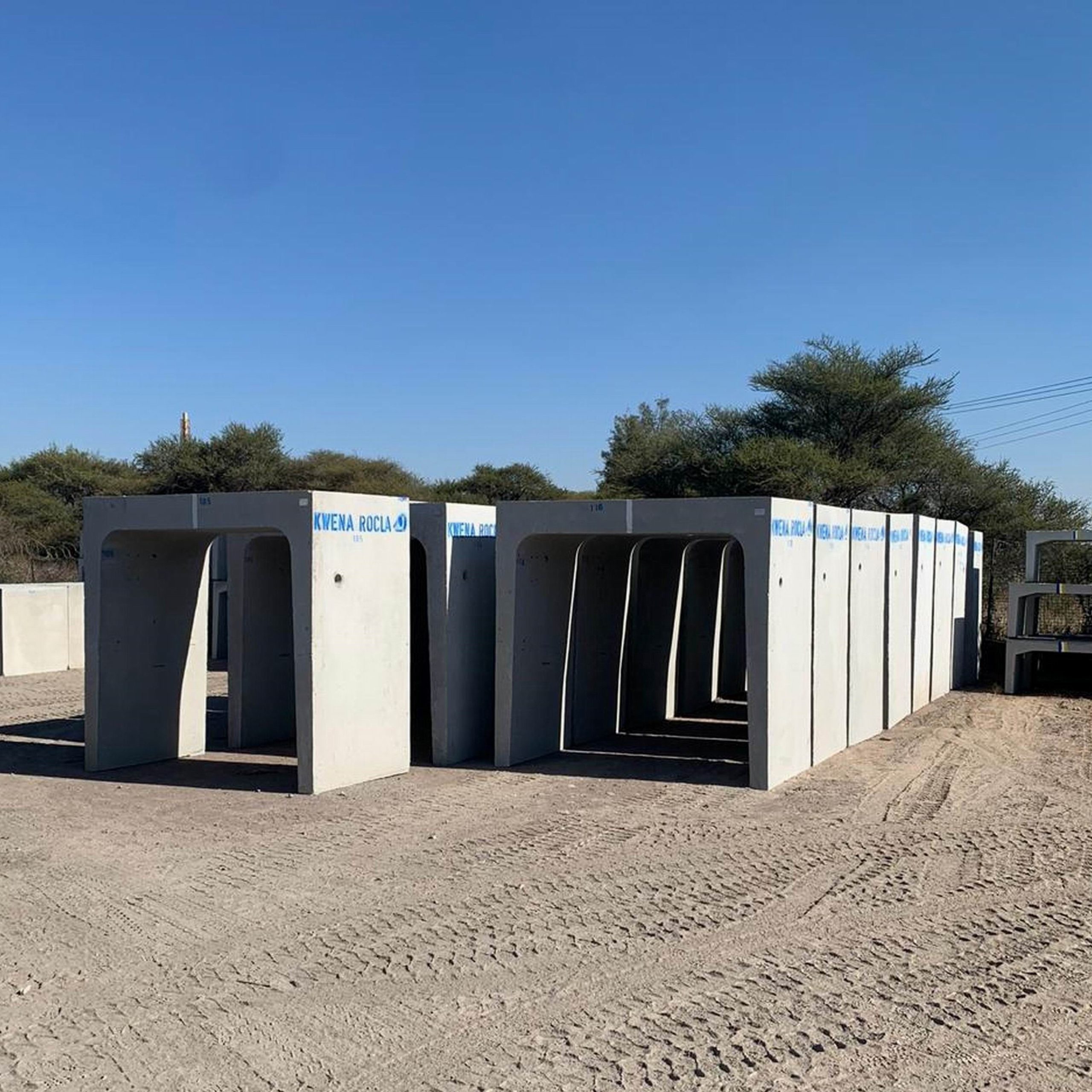Kwena Rocla has delivered 500 2 m x 2 m rectangular culverts to a mine in Botswana. The culverts were designed to support the enormous Komatsu 930E haul trucks which have a loaded mass of 500 tonnes (t) that are operational 24 hours per day.
“A stable transportation infrastructure is what all mining facilities require, particularly when huge yellow metal machinery such as the Komatsu 930E haul truck is utilised at site. To accommodate additional overload and the dynamic effects of acceleration and deceleration, we designed our culverts to accommodate a total vehicle load of 670 t, with a wheel load of 112 t which is an equivalent of 28 times the wheel load of a typical truck.”
Kwena Rocla was approached by the mine for customisation assistance as it had previously taken delivery of similar products which had been designed and manufactured by their specialist technical teams. The 500 culverts required specific engineering technicalities that would ensure the long-term durability of the culverts within the mining environment.
Mining environments are by nature harsh with huge payloads of materials needing to be transported in addition to the plant and associated equipment infrastructure set up at site. The Kwena Rocla specialist technical team needed to design culverts that could withstand such a rigorous environment and some of the parameters they are embraced are:
- Concrete mix design: different environments can have a detrimental effect on concrete. The concrete utilised for the culvert long-term durability was specifically designed for this purpose.
- Concrete cover to reinforcing: the thickness of the concrete layer over the reinforcing was crucial in the structural design.
- Curing methodology: the curing of concrete plays an important role in ensuring that the desired design properties of concrete are achieved.
- Structural design: the structural design, in addition to safely transferring loads should also ensure that crack widths are limited so as not to compromise the long-term durability of the structure.
“We believe that Kwena Rocla’s sales, operation and in-house technical team consisting of engineers, technologists and draughtsmen means that Kwena Rocla is not only a product manufacturer but offers significant value to a project from the feasibility stage through to construction and maintenance during a projects operational stage,” comments Bodhania.
The quality assurance and preparatory work to ensure that the culverts met the customer’s stringent requirements was an intense process. Bodhania adds that the loading on the culverts required dense reinforcing that takes longer to fix than standard culvert reinforcing. The 500 culverts were accompanied by a comprehensive quality assurance pack and each unit was individually numbered for traceability.
“This dense reinforcing coupled with the tight delivery deadlines meant that there was no room for delays so every team member had to ensure everything went according to plan throughout the duration of the project.
The proof of our success is that Kwena Rocla delivered the 500 2 m x 2 m culverts three months ahead of the required schedule,” says Bodhania.
Kwena Rocla standard culvert sizes range from a span of 450 mm to 3 600 mm, and from a height of 300 mm to 3 000 mm. Special sizes can be designed and manufactured to customer specifications.
The culverts are manufactured in 1,22 m lengths, but can be manufactured in special lengths to customer specification. The standard strength classes for these culverts are 75S, 100S and 125S. Special intermediate strengths or heavier loading requirements can be designed and manufactured.
Kwena Rocla is part of the Infrastructure Specialist Group (ISG) which in addition to its Botswana presence has operations throughout South Africa and Namibia.





